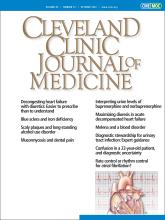
The clinical hallmark in patients with congestive heart failure (HF) is the presence of excess fluid volume, due at least in part to a cardiac etiology. Clinical HF includes pulmonary and other organ congestion, gravity-dependent soft-tissue edema, and ascites. In severe HF, volume expansion can be accompanied by organ hypoperfusion. Given the obvious link between volume expansion and symptoms, fluid removal has historically been at the top of the therapeutic to-do list. Over time, the list has included phlebotomy, mercurials, loop diuretics, dialysis, hyperfiltration, “unloading therapies,” and therapies that target physiologic pathways. The hope for finding the magic inotrope, including digoxin and dobutamine compounds, has not been fulfilled.
Current options and guidelines for treatment of the patient with HF include use of antagonists to a number of physiologic pathways that are upregulated in response to decreased cardiac function in an ultimately counterproductive way. Large-scale clinical trials support the use of specific drugs that target renin-angiotensin, adrenergic, vasopressin, and aldosterone pathways. A recent addition to this list are drugs that inhibit the sodium-glucose cotransporter 2 (SGLT-2) molecule. SGLT-2 inhibitor drugs have diuretic activity, but likely have additional extrarenal effects. As effective as these drugs have been in clinical trials, there is more to be learned about them and their interaction with traditional diuretics in the setting of decompensated HF.
The use of an intimidating cocktail of drugs, which is now standard of care for patients with chronic HF, is based on solid clinical trial data. Although much less emphasized and the subject of fewer landmark clinical studies, diuretics are still a mainstay in the treatment paradigm, particularly for patients with acute decompensated HF. Despite all the newer drugs and advanced treatment strategies for chronic HF, acute decompensated HF remains an extremely common cause of hospital admission and subsequent readmission. The dosing of diuretics in the acute setting has historically been empiric and experience-based, and the strategy for transition from intense inpatient diuresis to baseline diuretic dosing at the time of discharge is equally so. Initial diuresis is often complicated by some degree of diuretic resistance, and confounders in the discharge management process have included interpreting and managing the frequently elevated postdiuresis creatinine level and concerns regarding postdiuresis sodium retention.
Over the past decade, studies have provided pragmatic guidance for utilizing diuretics in patients with decompensated HF. As discussed by Mirzai et al1 in this issue of the Journal, the DOSE (Diuretic Optimization Strategies Evaluation) study2 provided strong supportive evidence for rapid and aggressive use of intravenous loop diuretic therapy—2.5 times the chronic oral outpatient dose given intravenously, followed by rapid and significant dose escalation. But not all patients respond to this dosing regimen, even after the suggested doubling of the dose in 2 hours. Mirzai et al offer several pragmatic solutions to this clinically challenging scenario in the diuretic-resistant patient. They and others have suggested following the urinary sodium level as well as urine volume, but the timing of sampling and logistics of this approach can be problematic.
Digging deeper into the pathophysiology of diuretic resistance3 reveals several complex interacting pathways. Not surprisingly, many of these have been targeted by drugs included in the current treatment guidelines for chronic HF. But none of these pathways can fully explain or be used to safely reverse diuretic resistance. Nor do they completely explain the phenomenon of postdiuresis sodium avidity, a potential component of resistance that in healthy humans seems at least in part a reactive response to renal sensing of relative volume depletion. A recent study4 questioned whether the postdiuresis renal sodium avidity response occurs in patients with chronic HF who likely remain somewhat volume-overloaded, even after initial aggressive diuresis. In an accompanying editorial, Martens et al5 highlighted the possibility that the kidneys of some patients with chronic HF acquire a sodium-retentive (avid) phenotype, and discuss several hemodynamic mechanisms by which this occurs. Future studies of pathway-targeting pharmacologic approaches may help elucidate this.
Just as the myocardium undergoes structural and biochemical remodeling in the setting of chronic HF, so may the kidney. Perhaps there are epigenetic factors at play that may attenuate the benefit from hemodynamic, neurohumoral, and pharmacologic interventions and complicate the interpretation of short-term studies. Possible evidence that not all of the hemodynamic adjustments to HF and aggressive diuresis are transient comes from the observation that rats treated with loop diuretics respond with significant hypertrophy of the distal tubules, with accompanying enhanced sodium reabsorption.6
The article by Mirzai et al1 in this issue prompted me to do some background reading, including rummaging through files of photocopied papers with my handwritten notes, some dating back to my residency. Yes, Dr. Laurence Beck, if I had paid more attention back then at your conferences, which frequently included strikingly lucid explanations of complicated renal physiology, my understanding would have come easier now. And I fully appreciate the lasting impact you had on many of us as our former program director. If it hadn’t been for you, I’d not likely have found this topic to be as intriguing as I do now, more than 40 years after listening to your teachings. A great educator does indeed impart gifts that keep on giving.
- Copyright © 2022 The Cleveland Clinic Foundation. All Rights Reserved.






